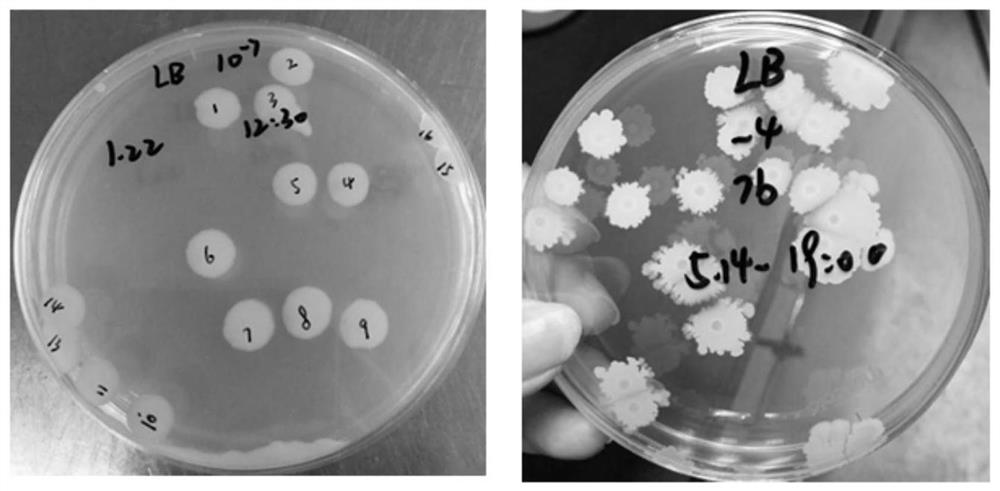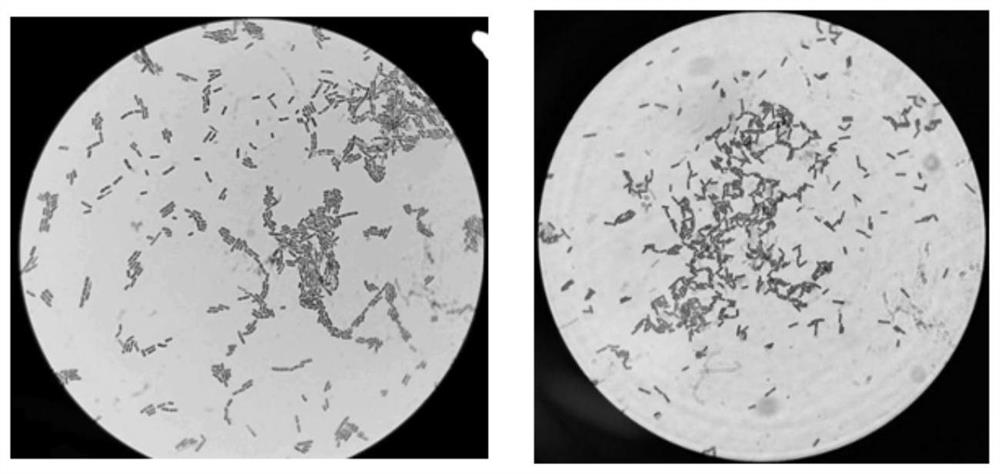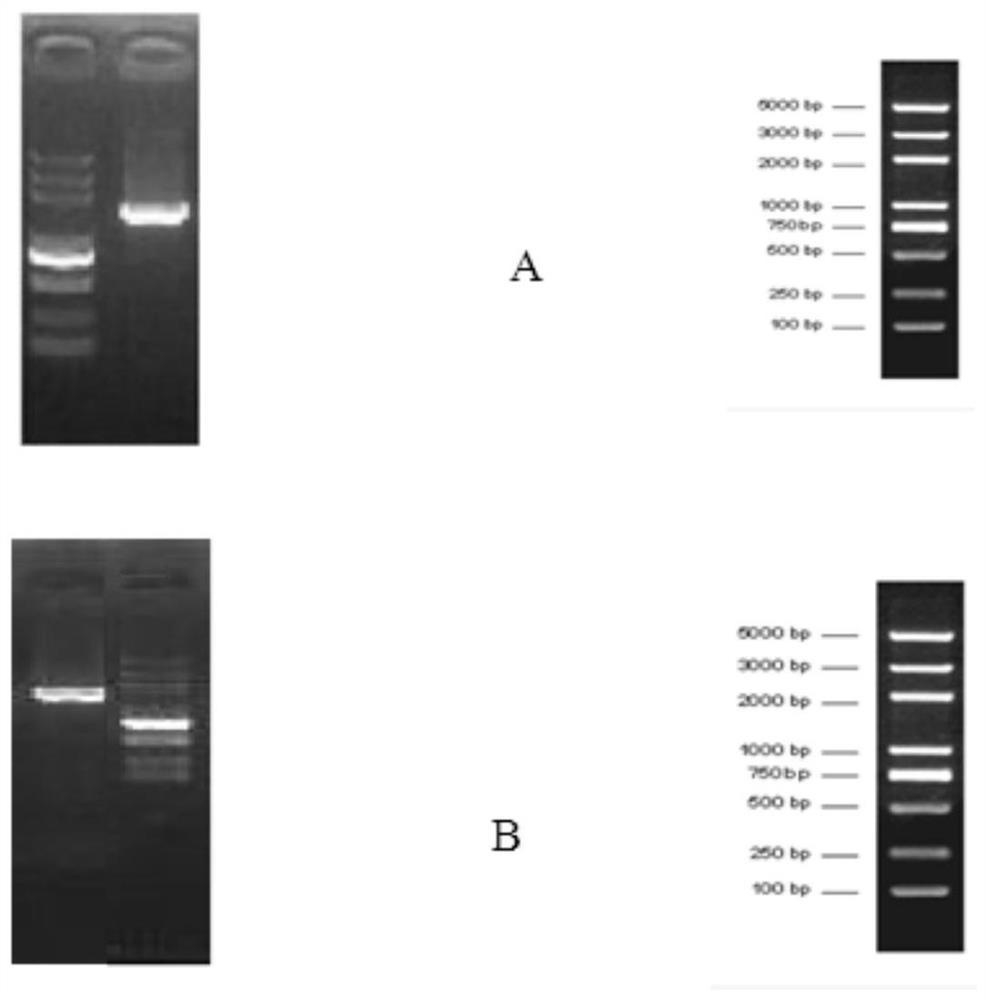A strain of Bacillus subtilis isolated from bee food and its application
A technology of Bacillus subtilis and bee food, which is applied in the preparation of fermented bee pollen, in the field of Bacillus subtilis, can solve the problems of restricting the development and utilization of pollen, destroying the extraction efficiency of active ingredients, etc., and achieves the promotion of digestion, absorption and release. Health benefits, the effect of increasing the content of total phenols and total flavonoids
- Summary
- Abstract
- Description
- Claims
- Application Information
AI Technical Summary
Problems solved by technology
Method used
Image
Examples
Embodiment 1
[0023] Example 1 Separation, purification and identification of microorganisms
[0024] 1. Isolation and purification of microorganisms in bee food
[0025] Aseptic operation, take 5g of bee food, put it in a 150ml sterile conical flask, add 45ml sterile water, shake and mix well, and then dilute to an appropriate concentration. Draw 100 μl of the diluted sample solution of each concentration into LB solid medium, spread the bacterial liquid evenly with a coater, and cultivate in a constant temperature incubator at 37°C for 20 hours.
[0026] Single colonies with different shapes were picked, streak-inoculated on LB solid plates, and cultured in a constant temperature incubator at 37°C for 20h. Repeat the above operation and purify for 4-5 generations until pure colonies are obtained. The resulting single strains were stored at -80°C in 50% LB liquid medium and 50% glycerol tubes containing 40% glycerol.
[0027] 2. Strain identification
[0028] 2.1 Observation of colony ...
Embodiment 2
[0055] The application of embodiment 2 microorganisms in fermented bee pollen
[0056] 1. Bacteria culture
[0057] The two strains of bacillus obtained by the above separation and purification and another strain of bacillus licheniformis preserved in the laboratory were cultured respectively, and the method was as follows:
[0058] (1) Bacillus licheniformis: Pick 2 rings of Bacillus licheniformis from the solid plate, insert it into a 250ml Erlenmeyer flask with 30ml LB medium, 37°C, 120r / min shaking culture for 12h, and then inoculate with 10% The amount was transferred into a 250ml Erlenmeyer flask containing 30ml of LB medium, and incubated at 37°C with shaking at 120r / min for 10h.
[0059] (2) Bacillus subtilis: Pick 2 rings of Bacillus subtilis from the solid plate separated and purified above, insert into a 250ml Erlenmeyer flask containing 30ml LB medium, 37 ° C, 120r / min shaking culture for 12h, then with 10% of the inoculum was placed in a 250ml Erlenmeyer flask c...
PUM
 Login to View More
Login to View More Abstract
Description
Claims
Application Information
 Login to View More
Login to View More - R&D
- Intellectual Property
- Life Sciences
- Materials
- Tech Scout
- Unparalleled Data Quality
- Higher Quality Content
- 60% Fewer Hallucinations
Browse by: Latest US Patents, China's latest patents, Technical Efficacy Thesaurus, Application Domain, Technology Topic, Popular Technical Reports.
© 2025 PatSnap. All rights reserved.Legal|Privacy policy|Modern Slavery Act Transparency Statement|Sitemap|About US| Contact US: help@patsnap.com



